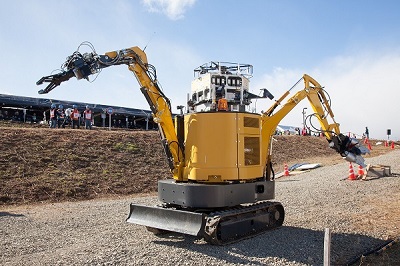 Monday, September 23, 2024
Monday, September 23, 2024  Monday, September 23, 2024
Monday, September 23, 2024 
As blogged on Wired.com, in debates about future of work, technology is often portrayed as the villain. One recent study calculated that 38 percent of jobs in the United States were at a “high risk” of being automated during the next decade. In the construction industry, predictions are especially dire: estimates of robot-fueled joblessness range from 24 percent in Britain to 41percent in Germany.
There is no question that automation will change the way people work, but for some sectors of the economy, change is long overdue. Nowhere is this truer than in architecture, engineering, and construction (AEC).
For an industry with nearly $10 trillion in annual revenue—about 6 percent of global GDP—its performance is not great. Worldwide, the average big construction project takes 20 percent longer to complete than planned and runs a staggering 80 percent over budget. Although most sectors of the construction industry—single-family residential construction; multifamily residential construction; highways, roads, and bridges construction; and industrial construction—have experienced improvements over the last decades (for example, the 2006–16 rate of productivity growth was 5.3 percent in industrial construction), there are still a lot of opportunities for productivity to keep increasing at an even faster rate and making the construction industry more efficient.
There are many factors contributing to the low efficiency of the AEC industry; these include low capital investments compared to other sectors, hazardous site conditions, project complexity, economic disruption, lack of transparency, and corruption. One of the biggest impediments, however, is a shortage of skilled workers. According to a 2017 study by the Associated General Contractors of America, 70 percent of contractors in the US struggle to hire skilled craft workers. This comes as hiring needs in the industry are expected to grow 12 percent by 2026.
Simply put, automating elements of the construction process is more than good engineering; it is also smart business.
Keep reading this blog on Wired.com
Watch the video and learn more about Construction Links Network – the peer-to-peer network sharing platform for the construction, building and design community.
Ideal for YOUR Press Releases | Project Updates | New Appointments | Awards & Milestones | Company News | New Products/Services | Brochures | Videos | Infographics | Blog Sharing | Events and More